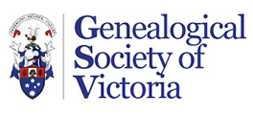When writing an article for Ancestor, please refer to these guidelines for preparation of your publication and to Tips for writing an article, Ancestor, volume 35, June 2020 pp26-27. Members (when logged in), can access that article online Ancestor June 2020. We do not publish articles of historical fiction.
Stylistic conventions
Language and spelling
Australian English, as per the Macquarie Dictionary.
Please note:
grandmother etc. (one word)
grand-daughter or granddaughter
great-grandfather etc.
2x great-grandfather or great-great-grandfather
3x great-grandfather, not great-great-great grandfather, etc.
Italics
Use these for:
names of commercial databases
names of ships
names of books, newspapers, magazines and journals
foreign language words
Do not use for text quotations.
Bold
Use this for:
website addresses
email addresses
Quotations
Use single quotation marks for short quotations (under 30-35 words), which are included in the text.
Use double quotation marks for a quote within a quote.
Longer quotations should be indented as a block quotation. The font size of the quotation should be one unit less than main text (e.g., 11 font v 12 font). No quotation marks are required.
Introduce indented text with a colon.
Always reference your block quotation by inserting an endnote immediately after the end of the block quotation.
Insert a one line space before and after the block quotation.
Spacing
Leave a space between paragraphs but don’t indent them.
Use a single space after commas, colons, semicolons and between sentences.
Numbers
Write dates as 3 September 1803 etc. i.e. simple number, not 1st, 2nd, 3rd etc.
Give the month and year in full, except in a citation where the month should be abbreviated to the first three letters.
Write the span of a decade with an 's' on the end, 1800s not 1800's except for direct quotes when original must be maintained.
Write the numbers one to twenty as words unless part of a measurement or a list of ages.
If at the start of a sentence, write in full or recast the sentence.
Weights and measures
Use those appropriate to the time and place with an equivalent in brackets if required.
Titles of Ancestor articles and references in endnotes
Use minimum capitalisation, i.e., capitalise only the first word and proper nouns.
Referencing (citations)
The rationale behind referencing is to enable readers to access and understand your source of information and make their own assessment.
Each reference should show where you obtained the information provided in your article.
Use endnotes rather than footnotes and Arabic numerals rather than Roman.
For records accessed via external databases such as Ancestry, Findmypast etc., cite the holding institution’s catalogue reference. Many public repositories have guides on their website that will assist e.g. https://prov.vic.gov.au/how-cite-public-records
Place the author's inititals and/or forename before surname, no full stops after initials e.g. A B Smith.
The references provided are not a bibliography and so are cited in the order they arist in the text rather than alphabetically.
Books
P De Serville, Port Phillip Gentlemen, Oxford University Press, Melbourne, 1980
K Cook & D Garvey, The Glint of Gold, Genlin Investments, Pymble, NSW, 1999
Journals
D Richardson, '1864- one of Brisbane's forgotten floods', Queensland History Journal, vol 23, no 3, 2016, pp175-84
Magazines
C Miller, 'Game Plan', Royal Auto, 17 Apr 2017, pp22-26
Newspapers
The first mention of a newspaper title should include the place of publication unless it is implicit in the title.
Omit the day of the week and abbreviate the month to the first three letters.
The Argus, Tue 16 Jul 1878, p6
The Times (London), 21 June 1853, p1
Unpublished material
K A Herbet, ‘Parallel knowledge: farmers and scientists and land classification’, BAppSc thesis, University of Canberra, 1995
Personal communications
A Smith, interview with the author, 20 Apr 2010
Websites
Genealogical Society of Victoria, Melbourne, https://dev.gsv.org.au, viewed 1 Apr 2017
URLs should link directly to the cited item, not to the homepage or other area of the website.
Wills
Will of William George Jennings of 1854, The National Archives, PROB 11/ 2194 The National Archives (TNA), London
Blog sites
Genealogical Society of Victoria, Family History Matters, /welcome-to-the-gsv-blog, viewed 18 Jun 2021
Second and subsequent citations
One author, two or multiple references to same source
M Cannon, Old Melbourne Town: before the gold rush, Loch Haven Books, Mainridge, Victoria, 1991, p37
M Cannon, p62
Avoid ‘ibid’, ‘loc. cit’, ‘op. cit’ etc. for ease of understanding and replace with above referencing techniques.
Images and captions
To make it clear what each image is, give it a number and a title. In the text of your article indicate, as in the following example, where you would prefer the image to appear.
Examples:
From a private collection:
[INSERT IMAGE 1 NEAR HERE
CAPTION: Image 1 - The grave of Mary Smith, courtesy of Joe Blow]
From an institutional collection:
[INSERT IMAGE 1 NEAR HERE
CAPTION: Image 1 - The grave of Mary Smith, artist Jack Richards, State Library of Victoria, Pictures Collection, Acc. No. H1234/45]
For further information refer to:
Australian Government Style Manual, https://www.stylemanual.gov.au/
N Kyle, Citing historical sources - a manual for family historians, Unlock the Past, St Agnes, South Australia, 2013, 41pp
Printed copies:
If you want a printed copy of these Guidelines for authors, please click on the printer friendly view at the top of this page.
